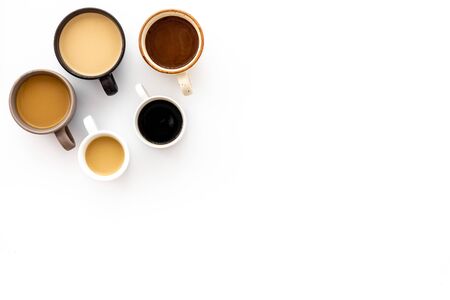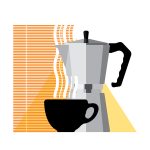1. Understanding the Roots: Japanese Coffee Culture
When we think about coffee culture, places like Italy or Seattle might come to mind first. But Japan has quietly developed one of the most meticulous and artistic approaches to brewing coffee—especially when it comes to hand drip or pour-over methods. This attention to detail didn’t happen overnight. It’s deeply rooted in Japan’s unique cultural history, shaped by values of precision, hospitality, and mindfulness.
The Birthplace: Kissaten Cafés
The story of Japanese coffee culture begins with the kissaten, traditional coffee shops that started appearing in the early 20th century. These cafés were more than just a place to grab a cup of joe—they were quiet sanctuaries for intellectuals, artists, and anyone seeking a peaceful atmosphere. Unlike modern fast-paced cafés, kissaten focused on quality over speed. Baristas treated coffee-making as an art form, carefully brewing each cup using hand drip techniques that required patience and precision.
Kissaten vs Modern Coffee Shops
| Aspect | Kissaten | Modern Coffee Shops |
|---|---|---|
| Atmosphere | Quiet, traditional, intimate | Lively, contemporary, casual |
| Brewing Method | Manual hand drip (pour-over) | Espresso machines and various methods |
| Service Style | Personalized, slow-paced | Quick service, often self-serve |
| Main Focus | Coffee quality and experience | Convenience and variety |
Evolving Into Global Influence
Fast forward to today, and Japanese pour-over methods have found their way into third-wave coffee shops around the world. This movement emphasizes craftsmanship and traceability—from bean sourcing to brewing. Specialty cafés in cities like New York, San Francisco, and Portland now proudly use Japanese brands like Hario or Kalita for their pour-over setups. The Japanese approach—slow, mindful, and precise—resonates with coffee lovers who want more than just caffeine; they want an experience.
Why Japanese Methods Stand Out:
- Precision: Measured pours and exact timing bring out subtle flavors.
- Aesthetics: Simple yet elegant tools enhance the ritual of brewing.
- Cultural Influence: A mindset of respect and care carries through every step.
The roots of Japan’s coffee culture remind us that sometimes slowing down is the best way to appreciate what’s in our cup.
2. What Makes Japanese Pour-Over Unique
Japanese hand drip coffee, often referred to as “pour-over,” stands out from other brewing methods around the world due to its deep focus on precision, ritual, and harmony. Its not just about making coffee—its an art form that blends technique and mindfulness into every cup. Let’s take a closer look at what makes this method so special.
Precision in Every Detail
Japanese pour-over emphasizes accuracy in every step of the process—from the amount of coffee used to the temperature of the water. This attention to detail ensures consistency and balance in flavor. Unlike more casual brewing styles, Japanese baristas often measure their coffee grounds and water with scales and thermometers.
| Element | Japanese Standard | Why It Matters |
|---|---|---|
| Coffee-to-Water Ratio | 1:15 to 1:17 | Ensures proper extraction and balanced flavor |
| Water Temperature | 195°F – 205°F (90°C – 96°C) | Affects how flavors are extracted from the grounds |
| Grind Size | Medium-fine | Controls brew time and flavor clarity |
| Brew Time | 2.5 – 4 minutes | Prevents over or under-extraction |
The Ritual of Brewing
The act of making pour-over coffee in Japan is almost meditative. Each movement is intentional—pouring water in slow, circular motions, allowing the coffee to bloom, and maintaining a steady flow throughout the process. This ritualistic approach turns brewing into a calming experience that encourages mindfulness and respect for the ingredients.
The Blooming Phase
This initial pour wets the grounds evenly, allowing gases to escape and setting the stage for even extraction. In Japanese technique, this step is given extra care, lasting up to 45 seconds before continuing with the rest of the brew.
Tools That Elevate the Experience
The tools used in Japanese pour-over are carefully chosen for their ability to enhance control and consistency. Here are some key tools commonly used:
| Tool | Description | Cultural Significance |
|---|---|---|
| Gooseneck Kettle | Narrow spout allows precise pouring control over flow rate and direction. | Symbolizes patience and discipline in preparation. |
| Ceramic Dripper (e.g., Hario V60) | Conical shape promotes even extraction; ridges help airflow. | A staple in modern Japanese cafés known globally. |
| Bamboo Stir Stick or Chopstick | Used gently during blooming or final stir to promote even saturation. | Adds a traditional, natural touch to the process. |
| Digital Scale with Timer | Keeps measurements exact and repeatable. | Reflects precision-focused mindset in Japanese craftsmanship. |
Pursuit of Balance in Flavor
The ultimate goal of Japanese pour-over is a clean, balanced cup that highlights subtle nuances of the coffee bean. Rather than overpowering notes, Japanese brewers aim for harmony between acidity, sweetness, body, and aroma. The result is a delicate yet complex profile that encourages slow sipping and appreciation.
Simplicity Meets Sophistication
This method values simplicity—not in effort but in outcome. The cup may look modest, but it reflects hours of practice, thoughtful selection of beans, and a deep respect for craftsmanship. That’s why Japanese pour-over continues to inspire baristas around the world.
![]()
3. Comparing Japanese and American Pour-Over Styles
When it comes to pour-over coffee, both Japan and the United States have developed unique approaches that reflect their culture, taste preferences, and brewing philosophies. While they share a love for precision and quality, the way they achieve that perfect cup often looks quite different.
Extraction Methods
Japanese baristas are known for their slow, meditative brewing style. They often use a delicate circular pouring motion and take their time to let each stage of the extraction bloom properly. The goal is clarity and balance in flavor. In contrast, American baristas may focus more on efficiency and consistency, especially in busy café environments. Their pours are typically quicker, with an emphasis on getting a bold and full-bodied cup.
Equipment Preferences
The tools used by Japanese and American brewers also differ. Japanese pour-over setups often include finely crafted ceramic or glass drippers like the Hario V60 or Kalita Wave, paired with gooseneck kettles for precise control. In the U.S., while these tools are also popular, theres a broader mix of materials including plastic drippers for practicality and thermal carafes for serving larger volumes.
| Aspect | Japanese Style | American Style |
|---|---|---|
| Brewing Speed | Slow and deliberate | Faster and efficient |
| Pourover Motion | Gentle circular pours | More direct or pulsed pours |
| Equipment | Ceramic/glass drippers (e.g., Hario V60) | Diverse materials including plastic and metal |
| Kettle Type | Precision gooseneck kettles | Gooseneck or standard kettles |
Flavor Profiles
Japanese pour-over coffee tends to highlight subtle notes—think floral aromas, bright acidity, and a clean finish. This reflects the Japanese appreciation for nuance and refinement. On the other hand, American-style pour-overs often aim for a richer body with pronounced flavors like chocolate, caramel, or dark fruit. Its not uncommon for American roasters to use darker roasts compared to the light roasts favored in Japan.
A Taste Comparison
| Taste Element | Japanese Pour-Over | American Pour-Over |
|---|---|---|
| Acidity | Bright and crisp | Mellow or balanced |
| Aroma | Floral, tea-like notes | Nuttier or cocoa tones |
| Mouthfeel | Light and silky | Full-bodied and bold |
The Cultural Influence Behind Each Cup
The differences between Japanese and American pour-over styles are rooted in deeper cultural values. Japan’s approach mirrors its tradition of craftsmanship (known as “shokunin”), where attention to detail is everything. Meanwhile, the American style reflects innovation and accessibility—bringing high-quality coffee into everyday life without sacrificing speed or convenience.
No matter which style you prefer, both methods celebrate the beauty of hand-drip coffee—and show how something as simple as hot water meeting ground beans can be transformed into an art form.
4. From Tokyo to Portland: How Japanese Methods Inspire U.S. Coffee Culture
Walk into any specialty coffee shop in cities like Portland, Los Angeles, or Brooklyn, and chances are youll see a barista carefully pouring hot water over freshly ground beans using a gooseneck kettle. This methodical process, known as pour-over brewing, has deep roots in Japan and is now reshaping how Americans enjoy their daily cup of coffee.
The Japanese Approach: Precision Meets Mindfulness
In Japan, making hand drip coffee isn’t just about brewing—it’s an art form. Baristas there emphasize control, patience, and intentionality. Every detail matters: from the grind size to the water temperature, and especially the pouring technique. Tools like the Hario V60 and Kalita Wave—both Japanese inventions—are now staples in U.S. cafes thanks to their ability to highlight the nuanced flavors of single-origin beans.
How American Cafes Are Adopting These Techniques
Inspired by Japan’s dedication to craft, many U.S. coffee shops have adopted similar methods. You’ll often find pour-over bars where each cup is brewed to order, giving customers a more personalized experience. Baristas are trained not only in technique but also in the philosophy behind it—slowing down and focusing on quality over speed.
Popular Japanese Tools Used in U.S. Cafes
| Tool | Description | Why Its Popular in the U.S. |
|---|---|---|
| Hario V60 | A cone-shaped dripper with spiral ridges for optimal water flow. | Allows full control over extraction; enhances clarity and brightness of flavor. |
| Kalita Wave | A flat-bottomed dripper with three small holes for even extraction. | Easier for beginners; produces a balanced and consistent cup. |
| Gooseneck Kettle | Narrow spout kettle used for precise pouring control. | Essential for controlling flow rate and direction during brewing. |
Cultural Shift: From Fast Coffee to Slow Ritual
The influence of Japanese pour-over methods has sparked a cultural shift in how Americans view coffee. It’s no longer just fuel for the day—it’s an experience. Specialty cafes encourage customers to take a moment, watch their coffee being made, and appreciate the craftsmanship behind each cup.
Barista Perspective
“Learning Japanese brewing techniques taught me to slow down,” says Marcus, a barista at a Portland café. “It’s about honoring the bean and creating something special for every customer.”
This mindful approach is helping redefine what great coffee means in America—one carefully poured cup at a time.
5. Mastering the Craft at Home
Bringing the elegance of Japanese hand drip coffee into your own kitchen is easier than you might think. With the right tools, a bit of patience, and some practice, you can recreate café-quality pour-over coffee at home. Here’s how to get started.
Essential Gear for Japanese-Style Hand Drip
Japanese pour-over methods emphasize precision and ritual. Having the right equipment not only helps you brew better coffee but also enhances the overall experience. Heres a quick guide to what youll need:
| Item | Description | Recommended Brands |
|---|---|---|
| Coffee Dripper | A cone-shaped dripper designed for even extraction. | Hario V60, Kalita Wave |
| Gooseneck Kettle | Allows for controlled pouring and steady flow rate. | Bonavita, Fellow Stagg |
| Coffee Scale | Helps maintain accurate coffee-to-water ratio. | Acaia, Hario |
| Burr Grinder | Ensures consistent grind size, crucial for flavor. | Baratza, Timemore |
| Fresh Coffee Beans | Use freshly roasted beans for best results. | Your local roaster or specialty coffee shop |
| Paper Filters | Designed specifically for your dripper type. | Hario filters (for V60), Kalita filters (for Wave) |
Step-by-Step Brewing Guide for Beginners
This beginner-friendly method is based on the Japanese approach to hand drip, emphasizing clarity, balance, and mindfulness during brewing. Follow these steps to craft your perfect cup:
Step 1: Prep Your Equipment
– Rinse your paper filter with hot water to remove any papery taste and preheat the dripper.
– Place your dripper over a mug or carafe and set everything on your scale.
Step 2: Measure & Grind Your Coffee
– Use a 1:15 coffee-to-water ratio as a starting point (e.g., 15g coffee to 225g water).
– Grind your coffee to a medium-fine consistency, similar to sea salt.
Step 3: Bloom the Grounds
– Start your timer.
– Pour just enough hot water (about twice the weight of your coffee) in a circular motion to wet all grounds—this is called blooming.
– Wait about 30 seconds; this releases trapped gases and preps the coffee for extraction.
Step 4: Begin Main Pour
– Slowly pour water in concentric circles from the center outward and back in.
– Aim for slow, steady pours to reach your total brew weight (e.g., 225g) within 2.5–3 minutes total brew time.
– Avoid pouring directly on the filter walls; focus on even saturation.
Step 5: Let It Drip & Enjoy
– Once all water has passed through, remove the dripper.
– Swirl your carafe or mug gently to mix flavors evenly.
– Sip and enjoy your handcrafted Japanese-style pour-over!
Troubleshooting Tips
- If your coffee tastes too sour, try grinding finer or increasing brew time slightly.
- If it’s bitter or over-extracted, coarsen the grind or reduce brew time.
- The goal is balance — clean body, bright acidity, and smooth finish.
Your Daily Ritual Awaits
The beauty of Japanese hand drip lies not just in the final cup but in the calm, intentional process behind it. Whether you’re new to home brewing or looking to refine your technique, embracing this style offers both satisfaction and serenity with every pour.


